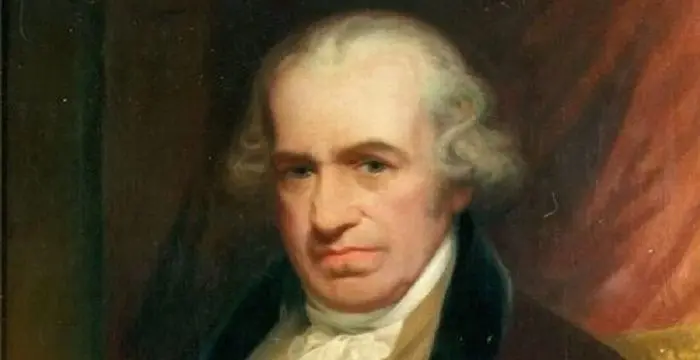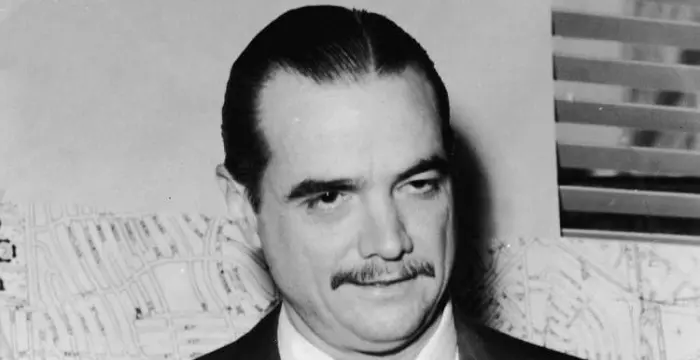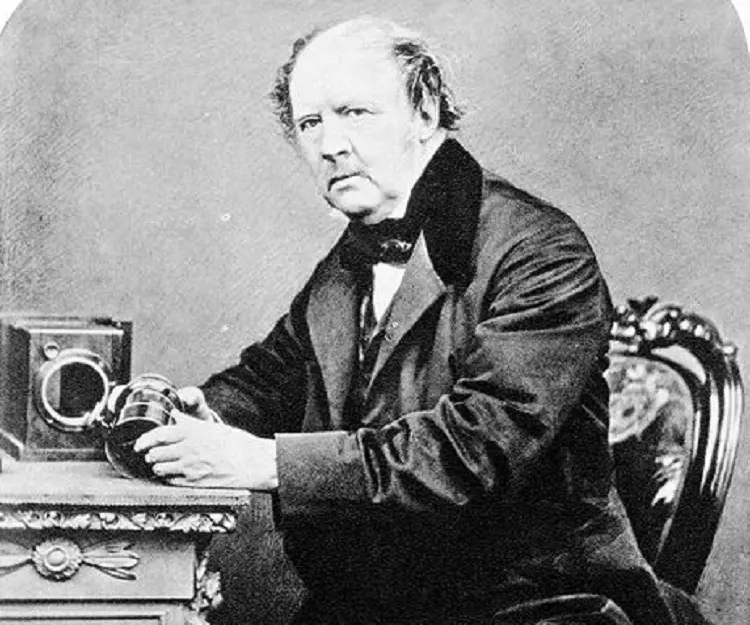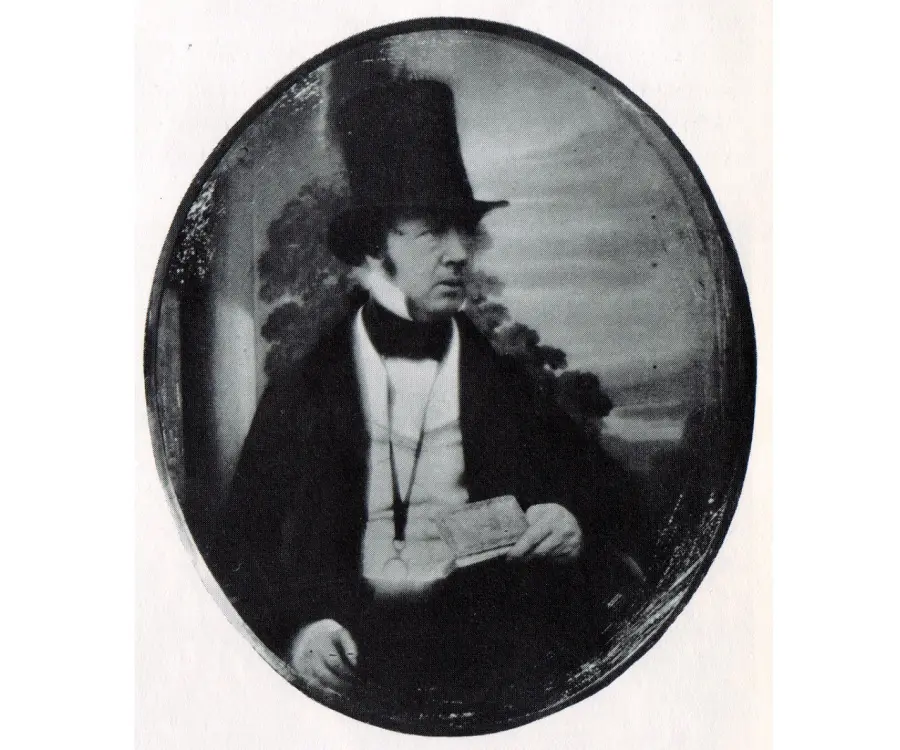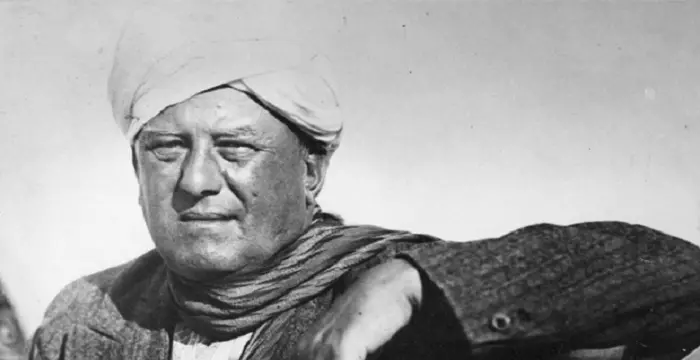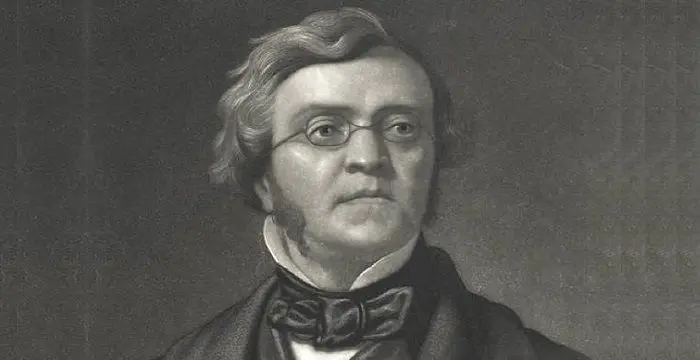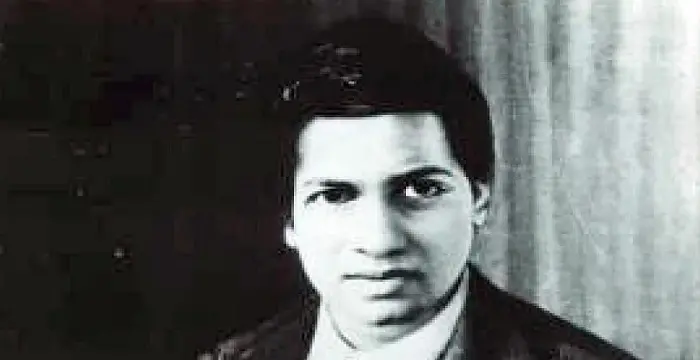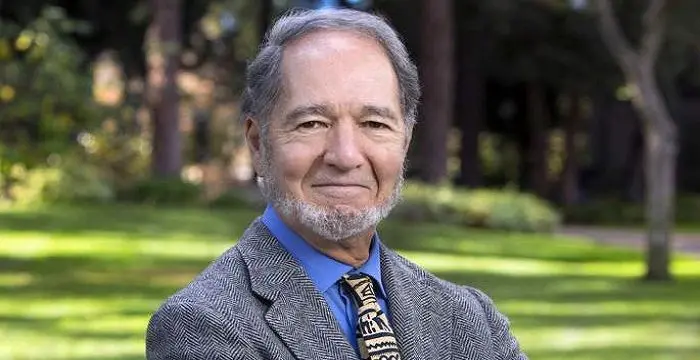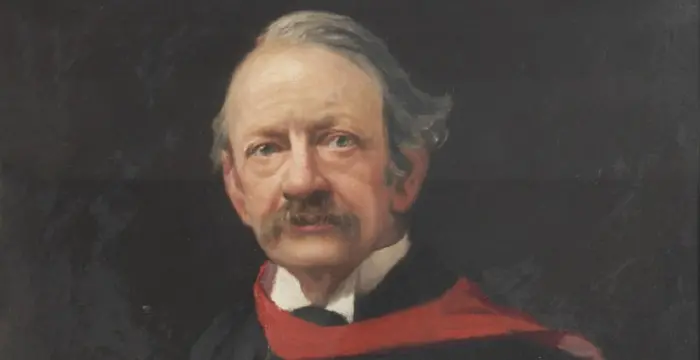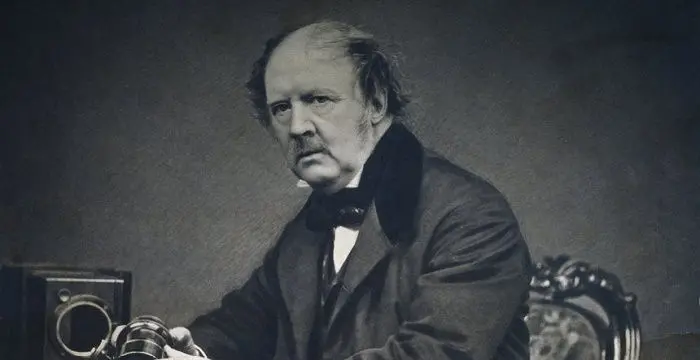
Henry Fox Talbot - Inventors, Timeline and Childhood
Henry Fox Talbot's Personal Details
William Henry Fox Talbot was a British scientist best known for inventing the salted paper and calotype processes
| Information | Detail |
|---|---|
| Birthday | February 11, 1800 |
| Died on | September 17, 1877 |
| Nationality | British |
| Famous | Trinity College, Cambridge, Photographers, Scientists, Inventors |
| Hobbies | Assyrian wedge writing, Electromagnetism |
| Spouses | Constance Fox Talbot |
| Known as | William Henry Fox Talbot, William Fox Talbot |
| Universities |
|
| Notable Alumnis |
|
| Discoveries / Inventions |
|
| Birth Place | Dorset |
| Gender | Male |
| Father | William Davenport Talbot |
| Mother | Elisabeth Fox Strangways |
| Sun Sign | Aquarius |
| Born in | Dorset |
| Famous as | Inventor |
| Died at Age | 77 |
// Famous Inventors
Thomas Newcomen
Thomas Newcomen was a British inventor who developed the world’s first steam engine. Browse through this biography to learn in details about his life, career, works and timeline.
Erno Rubik
The famous inventor and educationist, Erno Rubik is known world-wide for his invention the ‘Rubik’s Cube’. To know more about the childhood, profile, timeline and career of this famous architect-inventor read on.
Howard Hughes
Howard Hughes was an American aviator, business tycoon, philanthropist and also a film maker. This biography explores his childhood, career, achievements and timeline.
Henry Fox Talbot's photo
Who is Henry Fox Talbot?
William Henry Fox Talbot was a British scientist and photography pioneer best known for inventing the salted paper and calotype processes. He was a true polymath with interests in myriad subjects like chemistry, mathematics, astronomy, philosophy, classics, and art history, though he ultimately achieved fame as a pioneer in the field of photography which was still in its infancy in the mid-19th century. His invention, the photographic process of calotype was an improvement over the daguerreotype of the French inventor L.J.M. Daguerre. Talbot was the first to have developed the photographic negative, from which multiple prints could be made. During the 1840s he worked extensively on photomechanical reproduction which led to the development of the photoglyphic engraving process. Intelligent and curious from a young age, he developed interests in a variety of subjects as a boy. After completing his education from the prestigious Trinity College, Cambridge, he wrote several papers which he submitted to the Royal Society. Artistically inclined with a passion for chemistry he embarked on a series of experiments in photography. Over the next few years he made several important contributions to the field of photography, of which the most significant ones were the invention of the salted paper and photographic negative. He was awarded by the Royal Society for his photographic discoveries
// Famous Photographers
Susan Mikula
Susan Mikula is an American artist and photographer. Check out this biography to know about her childhood, family life, achievements and fun factsabout her life.
Bryan Randall
Bryan Randall is an American professional photographer. Check out this biography to know about his family, personal life, relationships, etc.
Ansel Adams
Ansel Adams was a renowned American photographer and environmentalist. Check out this biography to know about his childhood, family life, achievements and other facts about his life.
Childhood & Early Life
William Henry Fox Talbot was born on 11 February, 1800, in Melbury, Dorset, England as the only child of William Davenport Talbot and his wife Lady Elisabeth Fox Strangways. His family was a well-connected one.
His father died when the boy was still a baby. He lived in a succession of homes with his single mother until she remarried in 1804.
He was a bright young boy and was blessed with an innate curiosity and love for learning. He received his primary education from the Harrow School in Rottingdean. He went to study at the prestigious Trinity College, Cambridge after completing his schooling. There he received the Porson prize in Classics in 1820.
Following his graduation from the Trinity in 1821, he started submitting his papers to the Royal Society. Many of his papers were on mathematical subjects though he also had a keen interest in the sciences and also wrote articles on astronomy and physics.
He was a polymath with varied interests in different fields. He had an artistic bent of mind and developed a fascination with photography, a field which was in the early stages of its development in that era and offered much scope for experimentation and discoveries.
Career
He began his optical researches as a young man and contributed a paper titled ‘Some Experiments on Coloured Flame’ to the ‘Edinburgh Philosophical Journal’ in 1826 and a paper on ‘Monochromatic Light’ to the ‘Quarterly Journal of Science’ in 1827. He also wrote several papers on chemical subjects for the ‘Philosophical Magazine’.
While visiting the Lake Como in Italy in 1833 he tried to sketch the scenery but failed to capture its beauty. So he began to think of a machine which could capture images on light-sensitive paper. He set to work on this project upon his return home.
He briefly served in Parliament (1833–34) and spent much of the 1830s in experimenting in photography. He created the “salt paper” by wetting a sheet of paper with a solution of ordinary table salt which he brushed with a strong solution of silver nitrate upon drying. This made the paper light sensitive and it darkened when exposed to light.
He went on to develop a photographic process which he called Calotype. This method, which used paper coated with silver iodide, was considered to be an improvement over the process of daguerreotype developed earlier by Daguerre. He had this process patented in 1841.
His work, ‘The Pencil of Nature’ (1844–46), published in six installments, is regarded as an important and influential work in the history of photography. It was the first commercially published book illustrated with photographs. He was also the author of several other works, including ‘English Etymologies’ (1846).
Major Works
In spite of being a brilliant polymath, Talbot achieved the maximum fame as a pioneer in photography. He invented the salted paper through a series of experiments and this paper, which darkened where it was exposed to light, could be used to create images known as “salt prints”.
Another one of his major inventions was the Calotype—also known as talbotype after him—an early photographic process that produced a translucent original negative image from which multiple positives could be made by simple contact printing.
Awards & Achievements
In 1838, he received a Royal Medal in mathematics “For his papers entitled Researches in the Integral Calculus, published in the Philosophical Transactions for 1836 and 1837."
Talbot received the Rumford Medal of the Royal Society for his photographic discoveries in 1842.
Personal Life & Legacy
Henry Fox Talbot married Constance Mundy in 1832 and had four children: Ela, Rosamond, Matilda, and Charles.
William Henry Fox Talbot was plagued by ill health during his later years and died on 17 September 1877, at the age of 77.
// Famous Scientists
Juliane Koepcke
Juliane Koepcke is a German-Peruvian biologist, who was the lone survivor among the 92 passengers and crew of the ill-fated LANSA Flight 508 that crashed in the Peruvian rainforest on 24 December 1971. Know more about her life in this biography.
Henry Cavendish
Henry Cavendish was a theoretical chemist and physicist, renowned for discovery of hydrogen and calculation of the mass of earth. To know more about his childhood, profile, timeline and career read on
Konstantin Tsiolkovsky
Konstantin Tsiolkovsky was a Russian rocket scientist and a pioneer of astronautics. This biography provides detailed information about his childhood, family, personal life, career, achievements, etc.
Henry Fox Talbot's awards
| Year | Name | Award |
|---|---|---|
Other | ||
| 0 | 1842 - Rumford Medal | |
| 0 | 1838 - Royal Medal | |
Henry Fox Talbot biography timelines
- // 11th Feb 1800William Henry Fox Talbot was born on 11 February, 1800, in Melbury, Dorset, England as the only child of William Davenport Talbot and his wife Lady Elisabeth Fox Strangways. His family was a well-connected one.
- // 1804His father died when the boy was still a baby. He lived in a succession of homes with his single mother until she remarried in 1804.
- // 1820He was a bright young boy and was blessed with an innate curiosity and love for learning. He received his primary education from the Harrow School in Rottingdean. He went to study at the prestigious Trinity College, Cambridge after completing his schooling. There he received the Porson prize in Classics in 1820.
- // 1821Following his graduation from the Trinity in 1821, he started submitting his papers to the Royal Society. Many of his papers were on mathematical subjects though he also had a keen interest in the sciences and also wrote articles on astronomy and physics.
- // 1826 To 1827He began his optical researches as a young man and contributed a paper titled ‘Some Experiments on Coloured Flame’ to the ‘Edinburgh Philosophical Journal’ in 1826 and a paper on ‘Monochromatic Light’ to the ‘Quarterly Journal of Science’ in 1827. He also wrote several papers on chemical subjects for the ‘Philosophical Magazine’.
- // 1832Henry Fox Talbot married Constance Mundy in 1832 and had four children: Ela, Rosamond, Matilda, and Charles.
- // 1833While visiting the Lake Como in Italy in 1833 he tried to sketch the scenery but failed to capture its beauty. So he began to think of a machine which could capture images on light-sensitive paper. He set to work on this project upon his return home.
- // 1833He briefly served in Parliament (1833–34) and spent much of the 1830s in experimenting in photography. He created the “salt paper” by wetting a sheet of paper with a solution of ordinary table salt which he brushed with a strong solution of silver nitrate upon drying. This made the paper light sensitive and it darkened when exposed to light.
- // 1836 To 1838In 1838, he received a Royal Medal in mathematics “For his papers entitled Researches in the Integral Calculus, published in the Philosophical Transactions for 1836 and 1837."
- // 1841He went on to develop a photographic process which he called Calotype. This method, which used paper coated with silver iodide, was considered to be an improvement over the process of daguerreotype developed earlier by Daguerre. He had this process patented in 1841.
- // 1842Talbot received the Rumford Medal of the Royal Society for his photographic discoveries in 1842.
- // 1844 To 1846His work, ‘The Pencil of Nature’ (1844–46), published in six installments, is regarded as an important and influential work in the history of photography. It was the first commercially published book illustrated with photographs. He was also the author of several other works, including ‘English Etymologies’ (1846).
- // 17th Sep 1877William Henry Fox Talbot was plagued by ill health during his later years and died on 17 September 1877, at the age of 77.
// Famous Trinity College, Cambridge
Isaac Newton
Isaac Newton was an English scientist and mathematician, who discovered gravitation and Newtonian Mechanics. Read this biography to find more on his life.
Aleister Crowley
Aleister Crowley was an occultist and ceremonial magician who founded the ethical philosophy of Thelema. This biography of Aleister Crowley provides detailed information about his childhood, life, achievements, works & timeline.
William Makepeace Thackeray
William Thackeray was an English novelist and satirist. Read this brief biography to find more on his life & timeline.
Srinivasa Ramanujan
Srinivasa Ramanujan was an Indian mathematician who made significant contributions to mathematical analysis, number theory, and continued fractions. Check out this biography to know about his childhood, life, achievements, works & timeline. .
Jared Diamond
Jared Mason Diamond is an American scientist and author reputed for his highly acclaimed and popular science books.
J. J. Thomson
J.J. Thomson was an English physicist and mathematician. This biography profiles his childhood, life, academic career, research and timeline.
Henry Fox Talbot's FAQ
What is Henry Fox Talbot birthday?
Henry Fox Talbot was born at 1800-02-11
When was Henry Fox Talbot died?
Henry Fox Talbot was died at 1877-09-17
Where was Henry Fox Talbot died?
Henry Fox Talbot was died in Lacock
Which age was Henry Fox Talbot died?
Henry Fox Talbot was died at age 77
Where is Henry Fox Talbot's birth place?
Henry Fox Talbot was born in Dorset
What is Henry Fox Talbot nationalities?
Henry Fox Talbot's nationalities is British
What is Henry Fox Talbot hobbies?
Henry Fox Talbot's hobbies is Assyrian wedge writing, Electromagnetism
Who is Henry Fox Talbot spouses?
Henry Fox Talbot's spouses is Constance Fox Talbot
What was Henry Fox Talbot universities?
Henry Fox Talbot studied at Trinity College, Cambridge, Trinity College, Cambridge, Harrow School
What was Henry Fox Talbot notable alumnis?
Henry Fox Talbot's notable alumnis is Trinity College, Cambridge
What is Henry Fox Talbot's inventions/discoveries?
Photographic Engraving, Calotype, Photoglyphic Engraving was invented (or discovered) by Henry Fox Talbot
Who is Henry Fox Talbot's father?
Henry Fox Talbot's father is William Davenport Talbot
Who is Henry Fox Talbot's mother?
Henry Fox Talbot's mother is Elisabeth Fox Strangways
What is Henry Fox Talbot's sun sign?
Henry Fox Talbot is Aquarius
How famous is Henry Fox Talbot?
Henry Fox Talbot is famouse as Inventor
